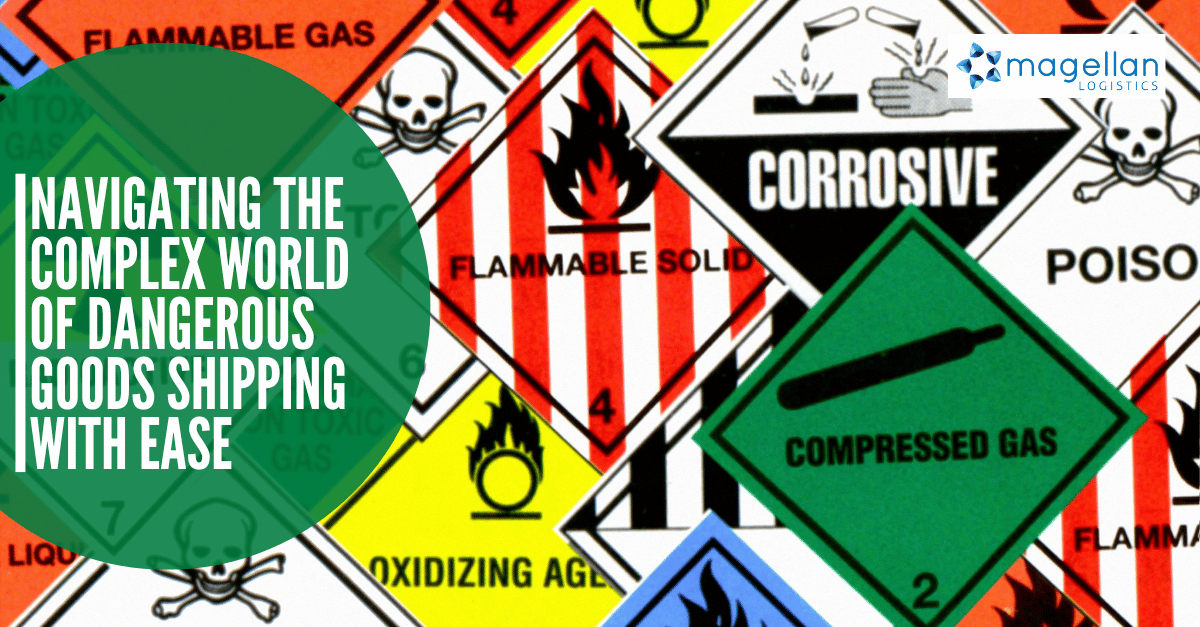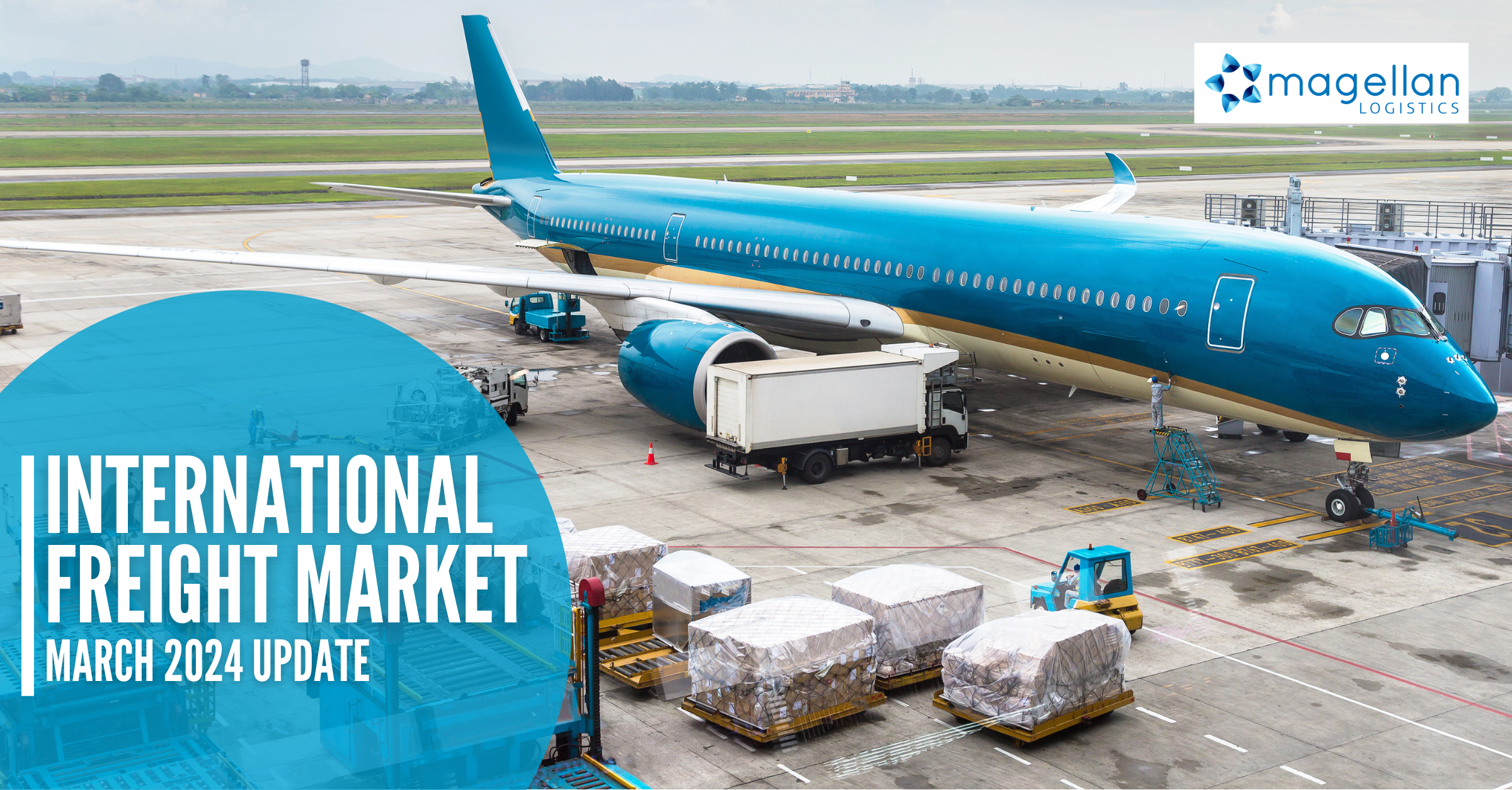Expert solutions for shipping hazardous materials safely and compliantly
Shipping dangerous goods requires a deep understanding of the classifications and regulations involved to ensure the safety of people, animals, and the environment. As a business owner or logistics manager, you need expert advice to help you quickly navigate the complexities and potential hazards of dangerous goods shipping and stay compliant.
What are considered dangerous goods when shipping?
Dangerous goods encompass a wide range of items, including explosives, chemicals, flammable liquids and solids, radioactive materials, and more. With nine primary classes and additional sub-classes, it’s crucial to accurately classify, label, and package your cargo according to regulations.
Types/classifications of dangerous goods
There are nine primary classes of dangerous goods and additional sub-classes to describe the properties of all hazardous cargo appropriately. The nine classes are as follows:
Class 1: Explosives
Used to describe substances capable of producing hazardous amounts of heat, gas, light, sound, or smoke.
Class 2: Gases
Includes compressed, dissolved, liquefied, and refrigerated gases and aerosols. Most gases are highly flammable and introduce risk when travelling.
Class 3: Flammable Liquids
Flammable liquids produce a combustible vapour that makes them highly dangerous.
Class 4: Flammable Solids
Flammable Solids are highly combustible and should be handled cautiously.
Class 5: Oxidising Substances
These products may not be combustible in themselves but can contribute to the combustion of other hazardous substances.
Class 6: Toxic and Infectious Substances
Toxic substances are hazardous to humans if inhaled, swallowed, or come into contact with skin. Infectious substances usually contain pathogens, including bacteria, viruses, parasites, or other agents which can cause disease in humans or animals upon contact.
Class 7: Radioactive Material
These materials are any substance that contains atoms subject to radioactive decay. During this process, radioactive material can emit potentially harmful ionising radiation.
Class 8: Corrosives
Known for chemical reactions that damage or destroy material upon contact.
Class 9: Miscellaneous Dangerous Goods
This category classifies cargo that does not fit into classes 1 to 8, including environmentally hazardous and elevated temperature substances.
Shipping DG by sea
Shipping dangerous goods by sea requires careful planning and attention to detail. The first step is correctly classifying the goods and ensuring they are labelled and packaged according to regulations. This will typically involve using special containers and packaging materials and providing detailed documentation about the shipment’s contents.
Once the goods are properly prepared, they must be loaded onto the ship in a designated hazardous goods area, and the ship’s crew must be trained to handle these items safely. The ship’s route must also be carefully planned to avoid areas where the dangerous goods could cause harm, such as shipping lanes near heavily populated areas.
Shipping DG by air
Shipping dangerous goods by air presents even more challenges than shipping by sea due to the increased risks associated with air travel. In addition to the proper classification, labelling, and packaging of the goods, the relevant aviation authorities must also approve shipments of dangerous goods by air.
When preparing to ship dangerous goods by air, it’s essential to work closely with the airline and the airport to ensure that all necessary safety measures are in place. This will typically involve using special containers and packaging materials and providing detailed documentation about the shipment’s contents. The goods must also be loaded onto the plane in a designated hazardous goods area, and the plane’s crew must be trained to handle these items safely.
Dangerous goods packing
When it comes to packing dangerous goods, it is essential to use suitable containers and packaging materials to ensure the safety of the materials and those handling them. Different packaging requirements may apply depending on the dangerous goods being shipped. In general, however, it is important to use containers that are strong and able to withstand the rigours of transportation and any potential hazards, such as leaks or spills.
In addition to using the appropriate containers and packaging materials, it is also important to properly label and mark the packages containing dangerous goods. This is essential for ensuring that the materials are handled properly during transportation and for alerting those handling the cargo to the potential hazards they may contain.
MSDS document
An MSDS, or Material Safety Data Sheet, is a document that provides information on the potential hazards and safe handling procedures for a particular substance or material. These documents are typically required for chemicals and other potentially hazardous materials. They are intended to help workers and others understand the potential risks of handling these substances and how to protect themselves from exposure.
Dangerous goods declaration
A dangerous goods declaration is a document that provides detailed information on the hazardous materials being shipped, including their classification, identification, and handling instructions. This document is typically required for transporting dangerous goods and is used to ensure that the materials are handled and transported safely.
A dangerous goods declaration typically includes information on the specific type and quantity of dangerous goods being shipped and their classification and identification according to the relevant regulations and standards. It may also have information on the packaging and labelling of the materials and any special handling or transportation requirements.
Proper storage before shipping
Nationwide Training Australia has published a complete guideline on storing hazardous goods, available here.
Proper storage of containers carrying dangerous goods is essential to prevent accidents and ensure the safety of individuals handling the containers. Here are a few guidelines for appropriate storage.
First, containers carrying dangerous goods should be stored in a designated area clearly marked and away from any sources of ignition or heat. This could include electrical equipment, open flames, or other potential ignition sources.
Second, ensure containers are stored upright and should not be stacked on one another. If the containers are large and cannot be stored upright, they should be stored on a stable, flat surface that can support their weight. This will help to prevent the containers from tipping over and spilling dangerous goods.
Finally, containers should be correctly labelled and marked to indicate the dangerous goods they carry. This will allow individuals handling the containers to take appropriate precautions and ensure they are stored in the correct location. It is also important to regularly check the containers for any damage or leakage and to take appropriate action if any is found.
Guidelines for labelling dangerous goods for shipment
- Durable, in English, and printed on or affixed to the surface of a package or on a label, tag, or sign.
- Displayed on a background of sharply contrasting colours;
- Not obscured by labels or attachments; and
- Located away from any other marking (such as advertising) that could substantially reduce its effectiveness.
Whether shipping by sea or air, Magellan Logistics works closely with relevant authorities and airlines to ensure all necessary safety measures are in place. Our team of experienced professionals handles all aspects of hazardous goods shipping, from classification and labelling to proper packaging and documentation.
In addition to using appropriate containers and packaging materials, Magellan Logistics helps you ensure the proper labelling and marking of packages containing dangerous goods. This alerts those handling the cargo to potential hazards and ensures materials are handled correctly during transportation. We also prioritise the safe storage of dangerous goods in designated areas away from any sources of ignition or heat.
At Magellan Logistics, our clients’ safety and their shipments are our top priority. Trust us to handle your dangerous goods shipping needs with the utmost care and compliance.
Ready to experience seamless and secure dangerous goods shipping with a trusted partner? Contact Magellan Logistics today to learn more about our comprehensive logistics services, and let us guide you through the complexities of shipping hazardous materials safely and compliantly.
Sources:
https://www.phmsa.dot.gov/sites/phmsa.dot.gov/files/2021-06/WEB-Ver-USDOT-CHART-17-0187-0621.pdf
https://www.casa.gov.au/operations-safety-and-travel/safety-advice/dangerous-goods-and-air-freight/dangerous-goods-classes-and-hazard-labels












